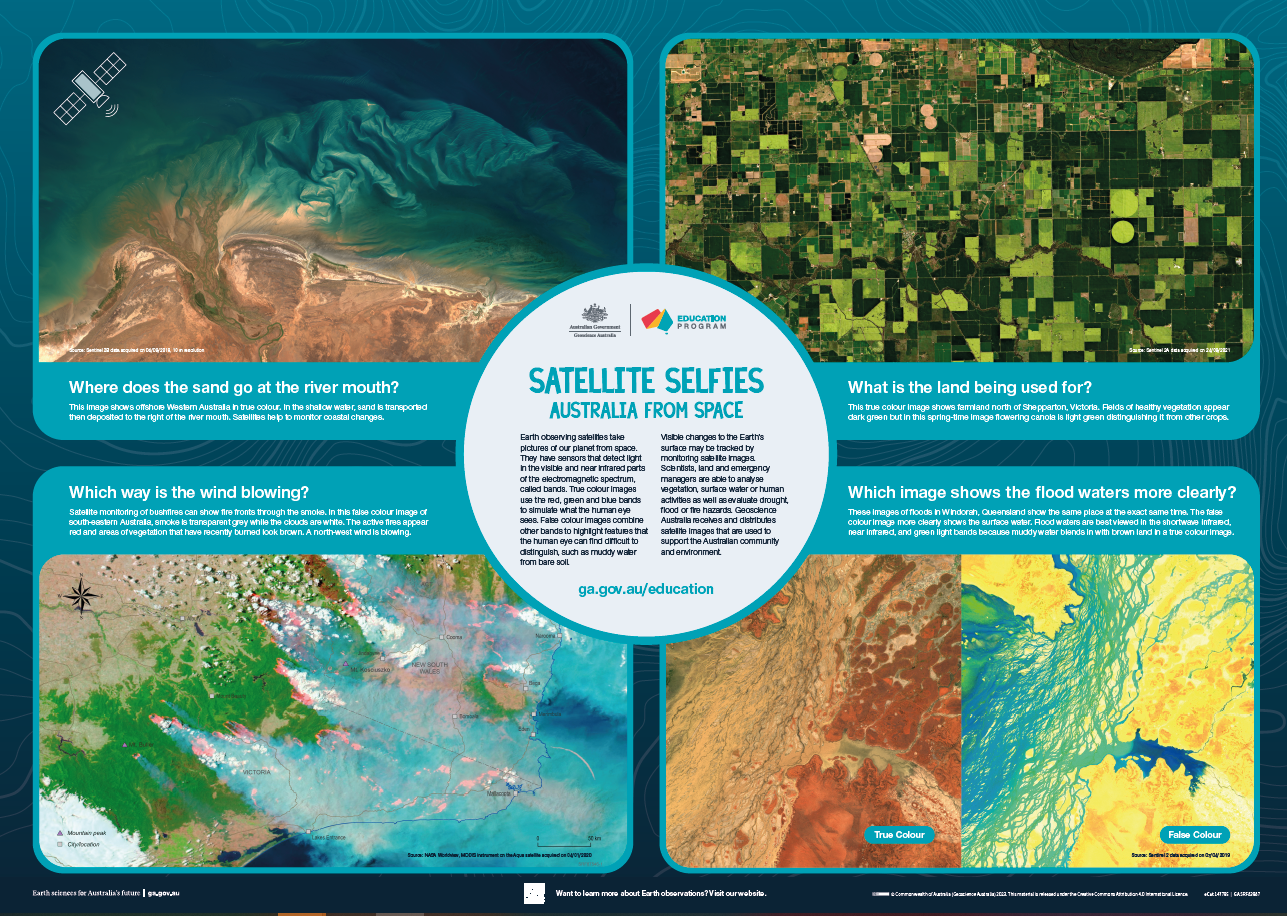Education
Type of resources
Keywords
Publication year
Scale
Topics
-
<div>The A1 poster incorporates 4 images of Australia taken from space by Earth observing satellites. The accompanying text briefly introduces sensors and the bands within the electromagnetic spectrum. The images include examples of both true and false colour and the diverse range of applications of satellite images such as tracking visible changes to the Earth’s surface like crop growth, bushfires, coastal changes and floods. Scientists, land and emergency managers use satellite images to analyse vegetation, surface water or human activities as well as evaluate natural hazards.</div>
-
Please contact education@ga.gov.au for information regarding the availability of this product.
-
CAML is a five year International Program which will be undertaken as a major activity during the International Polar Year. This project will bring together all known data on Antarctic marine biodiversity and ocean change. The Antarctic Ocean is one of the most sensitive ecosystems in the world. Research undertaken via CAML will produce fascinating images of the Southern Ocean Geoscience Australia's Marine and Coastal Group is contributing expertise in sea floor mapping and sediment core collection to CAML. The Australian Government Antarctic Division is collecting oceanographic data, video footage and sediment cores through hot-water drill holes in the Amery Ice Shelf. The sediment cores are collected using a corer designed and built by Geoscience Australia, and are being analysed by scientists at Geoscience Australia to understand the environmental history beneath this ice shelf. This project has now produced four cores. The only other core ever obtained from beneath an extant ice shelf from under the Ross Ice Shelf in the early 1970s showed no signs of life. However, several Amery cores contain diatom-rich sediments, and one contains a succession of benthic faunas that indicate progressive colonisation of the sub-ice sea floor as ice retreated and currents began to seep nutrients and plankton into the sub-ice shelf cavity.
-
No abstract available
-
Australia - Evolution of a Continent: Palaeogeographic Atlas
-
A new National Fleet of Ocean Bottom Seismometers to understand the structures deep beneath the ocean floor and how the continental plates are moving and what resources may lay under the ocean floor.
-
3D images and text describing Australia's Southeast Marine Region
-
The Map Reading Guide is an ideal resource for a wide range of map users and is an excellent and simplistic introduction to topographic maps which are suitable for anyone with an interest in maps. It contains: - an explanation of what is a topographic map - steps on how to read topographic maps, including explanations of map scale and how to use a map scale to calculate distance - the differences between grid north, true north and magnetic north - an explanation of symbols used on topographic map symbols - how hills and mountains are shown on maps using relief shading, hypsometric tinting, and contours - what a datum is and why there are different datum - explanations of the difference between geographic and grid coordinates - how to quote grid references from topographic maps - how to plan a successful trip using topographic maps - using Global Positioning System (GPS) receivers and magnetic compasses with topographic maps - using a topographic map to find your current position and to set a course. This product is the guide/map roamer card combination.
-
This bulk set contains fifteen special double-sided 1:75 000 Mount Todd maps, with topography on one side and geology on the other side. Also included are fifteen 1: 75 000 transparent plastic map-reading cards. This area of the Northern Territory contains part of Nitmiluk National Park (Katherine Gorge) and includes sedimentary, igneous and metamorphic rock types and also interesting geological features such as faults, folds and granite intrusions. Suitable for use at secondary level Years 8-12.
-
The Tsunami teaching resource comprises; - 36 page booklet that includes definitions and causes of tsunamis, how danger increases as tsunamis approach land and their frequency of occurrence in Australia. Also gives vital information on recognising and surviving a tsunami. - 3 reproducible student activities - suggested answers to student activities Suitable for secondary level Years 7-10.

